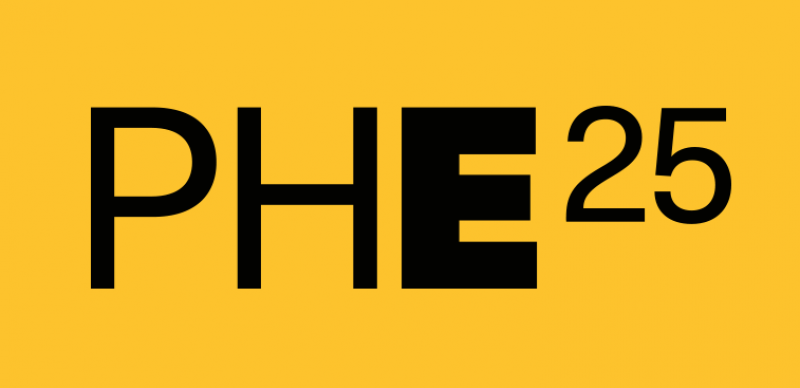Descripción de la Exposición ------------------------------------------------------- ------------------------------------------------------- Writing for Karina Bisch and Nicolas Chardon's project There is a love affair between the white cube and the black square has had its bearing onAbstraction & Storytelling I. Bisch and Chardon's book (which can be consulted at the gallery) holds images of the project's life, which consists in the collaboration between artists. The abstract motif during the twentieth century - especially the geometrized body, the square, line and grid - is explored in works but can also be re-encountered in functional objects. A fiction with lines and points seemed like an adequate response to the mood of their project. In the text I wrote, entitled 'Ode to I', the letters were attacked by punctuation marks and the I, in the end, topples over like this: I/_. The letter 'I' evokes Robert Morris' I-Box (1962) and a hint at narrative structure - thanks to conceptualism, which 'redeems' Morris - is set in minimal art. A small box, approximately forty-eight centimetres high, has a door with the outline of an 'I'. When opened, it reveals a photograph of the artist naked, half statue, half Adam smiling. This in turn points to the legendary works Two Columns and Column, both dated 1961, which Morris united by converting into an abstract narrative at New York's Living Theatre. Column, a kind of 'I', was performed by solely illuminating a column for three and half minutes. The column would then fall, and remain so for the same period of time. All of the ingredients to storytelling are gathered in this instance without an actual story being told (the loquacity of visual art has its limits): the condensation of time and space, a paradox and character (Morris had originally intended to stand inside the hollow column, but had injured himself during a rehearsal). The association between abstraction and narration has become, nowadays, somewhat standard - appearing even in the performance work, for instance, of Alexander Singh, Lili Reynaud-Dewar and Falke Pisano. It also emerges in libretto-like texts that accompany works. The opposition between abstraction and storytelling is thus pure dogma. Narration finds its way into titles, into implicit or explicit references and in the historical lineage certain abstract art seeks to recover. In Nicolas Chardon's work, narration is self-referential, adopting written language as a relative of the abstract adventure in painting. Evariste Richer's work Le Monde Maculé / Le Monde Immaculé, presents two copies of the French newspaper Le Monde: one was used to clean printer rolls, the other still to be printed, evoking, but without revealing, the impure diversity of events, fait-divers and possible incidents. On the other hand, narration provides a possible solution to the crisis of the symbolic system that artists from the first wave of abstract art attempted to edify. If, today, a colour or a specific geometric form cannot convey absolute values, these can nonetheless be found in contexts which root them in life. Abstract Rug by Maria Loboda tries to find a space for itself by changing position every day. Nowhere (Mississipi) by Marcelline Delbecq evokes the universe of writer William Faulkner by way of a visit to his museum-house: 5 prints on archival paper set mid-way between story and image underline the absence of each by way of a strangely warped view imposed by visitor barriers. In contrast, Valérie du Chéné elaborated a questionnaire about colour and submitted it to teenagers with whom she then proceeded to create silkscreen prints, subsequently transformed into small modular sculptures. The dialectic between forms and context is the base of all of the projects on view, often fruit of deterritorializations: Lili by Karina Bisch is a painting on African wax fabric, produced today, destiny's irony it seems, by Dutch and English textile industries. On the other hand, the linear sculpture of Charles Lopez transposes an Internet map, providing an imaginary route between two lands called 'Bout du Monde' ('End of the World') which the artist has activated, telling its story on a night of performances in Paris. Both the isolated form and fictional narratives have recurring structures - one appeals, supposedly, to the intellect, whereas the other triggers thoughtless and emotional adhesion. This lampooned separation stops us from understanding the evocative force of the abstract ornament, specific material, technique, gesture etc. Both the work of Julien Audebert and Julien Prévieux underline the relationship between ornament, history and personal projection. The historicity of ornament insinuates itself in the work of Julien Audebert by way of a reference to the modernist architect Adolf Loos, but also the artefact. In the case of Julien Prévieux, by way of the reproduction he had painted of covers containing abstract-metaphorical design of book covers from the sixties. Adrien Missika, in turn, substitutes the traditional mechanism of representation using photographic distance by bringing the Grand Canyon's immensity forth with a series of small circular black and white images, made using the telescope from a belvedere. Charlotte Moth also recounts, through the dynamic of image, a dialectic between pure form and its architectonic interpretation, submitted to time, the urban environment and imaginative context of each spectator. By dialoguing, abstraction and storytelling reveal their mechanisms, dispensing with, on the one hand, their symbolic independence and, on the other, their content in favour of a common structure which places them in time and space, converting history into story (Moth and Bisch invest past and obscure forms with a contemporary gaze), thus incarnating living structures.
Artistas: Julien Audebert, Karina Bisch, Nicolas Chardon, Marcelline Delbecq, Valérie du Chéné, Maria Loboda, Charles Lopez, Adrien Missika, Charlotte Moth, Evariste Richer.

Exposición. 30 abr de 2025 - 14 sep de 2025 / Varios espacios de Madrid y otras ciudades españolas / Madrid, España

Formación. 08 may de 2025 - 17 may de 2025 / Museo Nacional Centro de Arte Reina Sofía (MNCARS) / Madrid, España